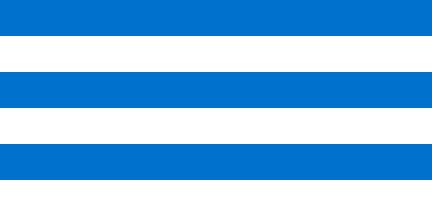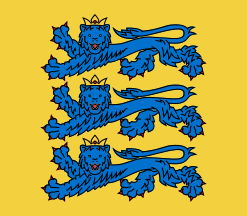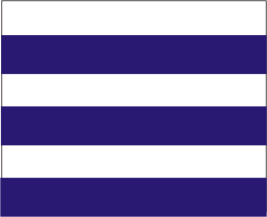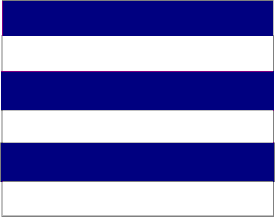
 zachary harden
zachary harden
Keywords: tallinn | estonia | harjumaa | revel | reval | port of tallinn |
Links: FOTW homepage | search | disclaimer and copyright | write us | mirrors

Last modified: 2024-07-31 by 
 zachary harden
zachary harden
Keywords: tallinn | estonia | harjumaa | revel | reval | port of tallinn |
Links: FOTW homepage |
search |
disclaimer and copyright |
write us |
mirrors

image by Zachary Harden, 13 August 2021
See also:
The official present Estonian name of the city is
"Tallinn" (with double L and stress on first syllable).
The city was founded by the Danes in 1219 after a great battle
against the Estonians in the place of an ancient Estonian
fortification which used to be called "Lindanise"
(Estonian), "Lindanäs" (Swedish) or
"Kolyvan" / "Ledenets" (Russian). It was
during this Danish- Estonian battle that, according to legend,
the Dannebrog fell from the sky in the hands of king Valdemar II
and led the Danes to victory. The lesser Coat of Arms of Tallinn
still shows a white cross on red shield, the greater Coat of Arms
resembles the Danish Coat of Arms with the three leopards.
After having founded their city and fortress, the Danes started
to call it "Reval" because of the surrounding ancient
province of Rävala. The name "Reval" was then taken
over by the Germans and the Swedes and most of the world. The
Russians changed it to "Revel", probably being easier
to pronounce. About the Poles I have no idea; maybe they used
"Revel", too.
The Estonians have called the place "Tallinn" right
from the beginning. The name is derived from the words
"Taani linn" which means castle/town of the Danes.
Sometimes you can even see the form "Tallin" - used by
Russians at least during the Soviet occupation - and
"Tallinna" which is the modern Finnish form (previously
"Rääveli" was used in Finnish) and the form used by
Estonians in the interwar period. Nowadays (since 1918/1945) in
foreign languages, even German and Danish, the historical name
"Reval" is rarely used and "Tallinn" is the
most common form.
Marco Pribilla, 27 November 2001
Tallinn is the Estonian name. It means "the town of the
Danes", since the town was founded when Estonia belonged to
Denmark for a time in the Middle Ages. Reval is the German name,
used by the Teutonic Order when they ruled Estonia, and also used
by the German speaking population in Estonia which left the
country in the 1930s and 1940s. I think the Danes used a similar
name. When Estonia belonged to Sweden, the name Reval was used,
but there were also some Swedified forms, like Räffle. I think
the Russian name is Tallin.
Elias Granqvist, 27 November 2001
Russian name was "Revel'".
Source: Geography of the USSR, by Theodore Shabad, 1954
Jarig Bakker, 27 November 2001
I think the name in Russian is Tallin and base what I say on
the following soviet sources:
- Malyi Atlas SSSR, ed. Glavnoe Upravlenie Geodesii i Kartografii
pri Sovyete Ministrov SSSR, 1981
- Atlas Mira, ed. Glavnoe Upravlenie Geodesii i Kartografii pri
Sovyete Ministrov SSSR, 1985
- Dicionário Prático Português-Russo, ed. Russkiy Yazyk, 1986
- Dicionário Português-Russo, ed. Russkiy Yazyk, 1982
Jorge Candeias, 28 November 2001
Both are correct. The name "Reval" with its
derivations like the Russian "Revel" was widely used
before the first Estonian independence ~1219-1918 when the
country was under Danish / German / Swedish / Russian domination.
When Estonia gained independence, the Estonian form
"Tallinn" or "Tallinna" became the official
one and was gradually taken over to foreign languages as well. In
Russian one "N" was dropped and the name became
"Tallin".
Marco Pribilla, 28 November 2001
The phrase "The city was founded by the Danes in
1219" is incorrect.
The city was first mentioned in 1154, which is the universally
accepted date. In 1154 what is now Tallinn was first marked on a
map by an Arab cartographer Avicenna. The first reliable account
of Tallinn's history comes from The Chronicle of Latvian Henrik,
wherein Henrik describes the landing of the Danish fleet, led by
King Valdemar II, under the city (then called Lindanise or
Lindanäs) in June of 1219. The Danes made a battle against what
was already a functioning city-fortress, and after it fell to the
Danes, the locals began calling it “The Danish Town”.
It must have been a rather important and difficult battle, since
otherwise the arrival of the Dannebrog from the heavens would
have lost its emotional impact. Ergo, Tallinn (Lindanäs) was a
town so strong, that the Danes needed the Divine intervention in
order to conquer it.
Mart Sander, 27 February 2010
The image of the flag of Tallinn was fixed for the first time
in a Heraldics Atlas, published in the middle of the XVIII
century in Nuremburg. In the middle-ages it was the flag of the
commercial fleet of the Hansatown. Ratio: 1:2 (also used at 1:3).
Toomas Mölder, 12 June 1995
At J.W Norie - J.S. Hobbs: Flaggen aller seefahrenden
Nationen, 1971[ nor71] (original
print 1848):
98 Revel - Six stripes blue over white.
[beL56] has six stripes white over
blue for "Pavillon de Revel. en Livonie".
Peter Hans van den Muijzenberg, 12 and 27 November 2001
The flag of Tallin emerged from the oldest coat of arms of medieval Danish
clan Hvide. Besides visual sameness (for example
http://www.familiekroeniken.dk/site/person.asp?person=68730 ), there is also
strong historical connection - one of the Danish leaders of Estonian crusade and
first administrator of newly conquered Danish Estonia was archbishop Anders
Sunsen from clan of Hvide.
Oscar, 19 August 2011
According to Tallinn Statutes (§ 9 and 10), the flag of Tallinn has a ratio of 1x2 and the blue shade used on the flag is Pantone 285 (the same shade used on the national flag). (Source)
Zachary Harden, 13 August 2021
The Executive Committee of the Council of People's Deputies in
1988 and the new City Council of Tallinn on May 23rd, 1991
confirmed the regulations for the usage of the two historical
coats of arms and the flag of the town.
Toomas Mölder
![[Tallin Big Coat of Arms]](../images/e/ee-tallg.gif)
image from <identiteet.tallinn.ee>.
The history of the big coat of arms of Tallinn begins in the
XIII century. The three crowned blue lions Passant guardant
descend from the coat of arms of Danish king Waldemar II
[1202-1241], the first landlord of the town. In 1788 Russian
empress Catherine II corroborated the big coat of arms together
with its mantling and crest. During the years 1940-1988 it was
not in use. Nowadays it is used on the City Government's seal,
official forms, honour certificates etc. without mantling and
crest, being the official coat of arms of Tallinn.
Toomas Mölder
Another Coat of Arms [full version] appears at: <identiteet.tallinn.ee>.
Dov Gutterman, 1 July 1999 and Zachary Harden, 31 July 2024
![[Tallin small Coat of Arms with silver crest]](../images/e/ee-talss.gif) With Silver Crest |
![[Tallin small Coat of Arms with white crest]](../images/e/ee-talsw.gif) With White Crest |
|---|
In the XV-XVI centuries the small coat of arms of Tallinn was
established after the coat of arms of the Great Guild, which by a
wellknown story derived from the Danish flag Danebrog.
During the years of the Estonian Republic (1918-1940) the small
coat of arms was also used as the coat of arms of the Harju
County. Now it is used on souvenirs and on town decorations.
Toomas Mölder
According to Tallinn Statutes (§ 9-3), the small coat of arms of Tallinn uses Pantone 200 for the red shade; the multiple versions are
still in use. (Source)
Zachary Harden, 31 July 2024

image by Zachary Harden, 31 July 2024
According to Tallinn Statutes (§ 9-6), the coat of arms is used as a heraldic banner for special occasions; the ratio of the flag is 7:8 and is decorated with golden fringe. (Source)
Zachary Harden, 31 July 2024

image by Jaume Ollé, 11 May 2003
No. 566b - Reval.
Source: [stb62]
Jaume Ollé, 11 May 2003

image by Jaume Ollé, 14 August 2003
No. 842a - Reval.
Source: [stb62]
Jaume Ollé, 14 August 2003
I just came across a photo
of the flag of the Port of Tallinn (Estonia) at :<www.freshtravels.com>,
but there is no any explanation
.The official
website of the Port of Tallinn gives more information, but
nothing about the flag.
"Port of Tallinn is Estonian biggest cargo and passenger
harbour complex playing an important role in Estonian transport
system and economy on the whole. Port of Tallinn consists of five
harbours:
Old City Harbour
Muuga Harbour
Paljassaare Harbour
Paldiski South Harbour
Saaremaa Harbour
All the harbours are navigable round the year, well accessible
and with sufficient depth, ready to receive all vessels passing
through the Danish Straits.".
Valentin Poposki, 27 February 2007